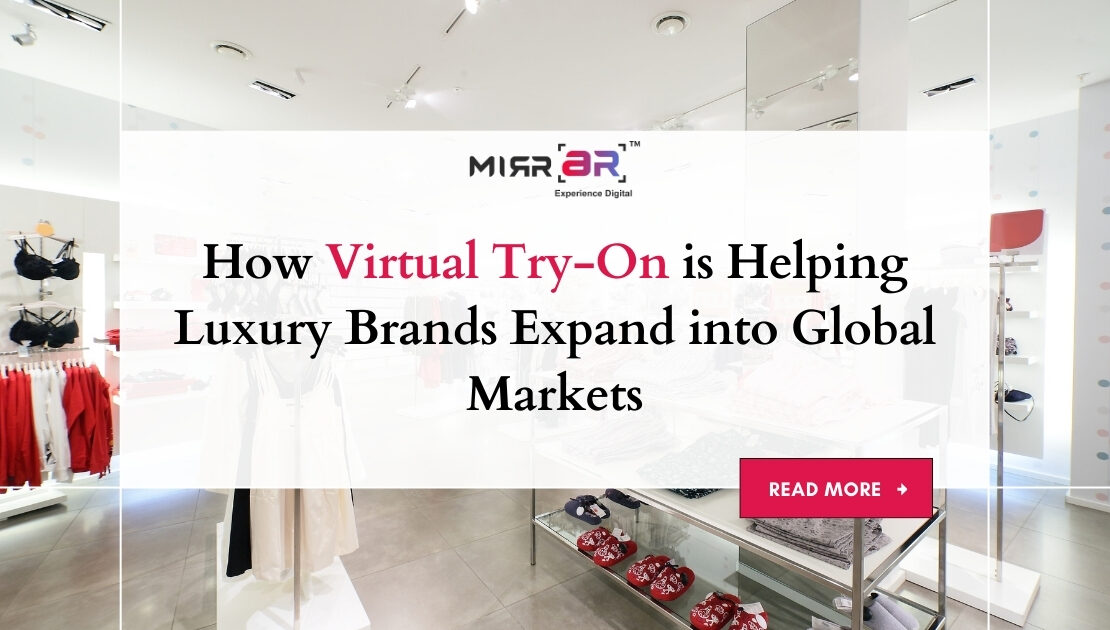
Luxury fashion has long been synonymous with exclusivity, artistry, and physical experience. But in today’s globalized, digital-first era, luxury brands face an evolving challenge—how to maintain that aura of exclusivity while expanding their footprint across geographies. The answer lies in Virtual Try-On (VTO) technology, a powerful tool enabling luxury labels to reach international audiences while delivering immersive and personalized experiences.
At the forefront of this evolution is MirrAR, a leading AR-driven Virtual Try-On solution that’s helping luxury brands unlock global potential without compromising on brand identity or customer experience.
Breaking Down Barriers: From Storefronts to Smartphones
Traditionally, luxury shopping was anchored in physical stores—opulent spaces, high-touch service, and in-person styling. But these showrooms are geographically limited, making it difficult for consumers in remote or underserved regions to access them. Virtual Try-On breaks this limitation.
With MirrAR’s Virtual Try-On, a customer in Tokyo, New York, or Cape Town can instantly try on luxury eyewear, jewelry, apparel, or cosmetics using just their smartphone or computer. This democratization of luxury experience removes the need for a physical presence and allows brands to enter new markets seamlessly, without the logistical or real estate investments.
Enhancing Confidence Through Personalization
One of the biggest challenges in cross-border luxury e-commerce is the lack of physical interaction with the product. When you’re spending thousands on a necklace or couture dress, you want to feel it before buying. VTO bridges this sensory gap.
AI-powered and AR-enhanced, MirrAR’s VTO creates lifelike 3D renderings of products that customers can visualize on themselves in real-time. They can rotate, zoom, and see the item from multiple angles, gaining the confidence they need to make high-value purchases—even across borders.
This immersive personalization reduces hesitation, increases conversion rates, and builds trust in global audiences who might otherwise shy away from remote luxury purchases.
Also Read: From Tech to Touch: The Role of Haptic Feedback in Future Virtual Try-On Innovations
Catering to the Global Consumer Mindset
Luxury consumers in 2025 aren’t just looking for heritage and craftsmanship; they expect innovation, accessibility, and ethical value. The modern shopper might discover a brand on Instagram, try on products virtually through a mobile app, and make a purchase from a completely different continent.
MirrAR supports this omnichannel behavior by integrating seamlessly into websites, apps, and even in-store displays, ensuring a consistent and engaging customer journey—no matter where the shopper is located.
This global accessibility enhances brand loyalty while empowering luxury houses to tap into new demographics and emerging markets, including digitally native Gen Z and Millennials from Asia, Africa, and Latin America.
Lowering Returns, Increasing Margins
International shipping and returns are one of the biggest pain points for luxury brands. The costs, customs complexities, and potential damage to products make returns a nightmare. But guess what? Virtual Try-On reduces this risk significantly.
By giving shoppers a clear, realistic idea of what an item looks like on them, VTO drastically lowers return rates. With better fit and style visualization, customers are more likely to make purchases that suit their preferences, saving brands millions in operational costs and protecting profit margins.
Real-Time Data for Global Strategy
Beyond the visual experience, MirrAR’s Virtual Try-On tools provide brands with valuable data. Brands can track which products are being tried on, what geographies show higher engagement, what styles are trending in which regions, and how long users interact with certain pieces.
This data-driven insight allows luxury labels to adapt their marketing strategies, customize regional collections, and plan inventory distribution with surgical precision. Essentially, it transforms a visual tool into a powerful market intelligence platform.
The Sustainability Edge
Sustainability is becoming increasingly vital in luxury. Frequent shipping, returns, and unsold inventory all carry environmental costs. Virtual Try-On helps minimize this impact by promoting more informed, less wasteful shopping.
By expanding globally through digital means rather than physical expansion, luxury brands also reduce their carbon footprint—aligning with the growing demand from conscious consumers for environmentally responsible practices.
Real-World Success: Global Brands Leading the Way
Several global luxury players have already embraced VTO to great success. From high-end eyewear brands offering virtual frame try-ons to premium jewelry houses letting customers digitally model rings and necklaces, the industry is waking up to the immense potential of this technology.
MirrAR, in particular, has partnered with iconic names to transform their digital showrooms and online experiences, delivering an unmatched blend of convenience, luxury, and tech sophistication.
Looking Ahead: A Luxury Retail Renaissance
The future of global luxury retail doesn’t lie in more stores—it lies in more intelligent, immersive, and inclusive technology. Virtual Try-On tools like MirrAR are not just a response to digital trends; they are pioneers of a new era—where touchpoints are virtual but experiences feel personal, and where global reach meets local resonance.
In an age where borders blur but luxury still demands exclusivity, Virtual Try-On is the bridge that connects heritage with high-tech, and aspiration with accessibility.
Conclusion
Luxury fashion is evolving rapidly, and the brands that will lead the next chapter are those that embrace innovation without losing identity. With MirrAR’s cutting-edge Virtual Try-On solutions, luxury houses can now reach shoppers in every corner of the world, offering them a bespoke, immersive experience—without ever stepping foot in a flagship store.
From Milan to Mumbai, Paris to Perth, the luxury revolution is already here—and it’s powered by AR
